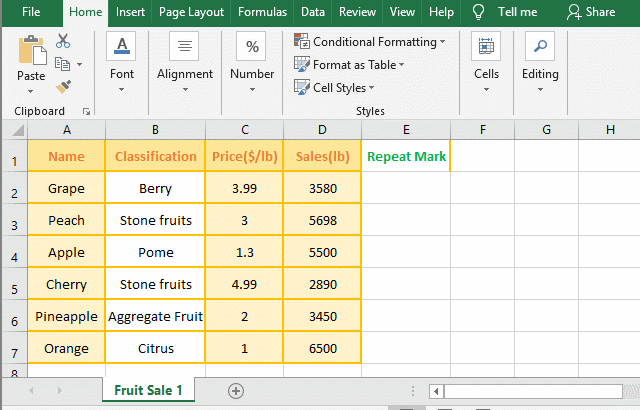
However, the question poised in the comment I replied to was a more complicated problem: “I need to find records where certain fields are close matches” How close is close enough? 🙂įirst, here is the very basics of how I used it.ġ) I started with a roster of names to check against. Because of that, the implementation in more complicated, and required the use of VBA. I will say upfront that my suggestion was beyond the original post on using the Conditional Formatting feature. H(i + 1, j + 1) = H(i1, j1) + (i – i1 – 1) + 1 + (j – j1 – 1) ‘ in the case of transpositionįor xc = 1 To sdlen ‘ More magic that helps with transpostion If H(i + 1, j + 1) > H(i1, j1) + (i – i1 – 1) + 1 + (j – j1 – 1) Then ‘ Magic formula that is used for the matrix H(i + 1, j + 1) = H(i, j) + 1 ‘ if then Min of adjacent matrix cells H(i + 1, j + 1) = H(i, j) ‘ If = then previous low value If tchrS = tchrT Then ‘ Filling matrix with new value ‘ By flood filling the matrix, it will determine Edit Distance ‘ It uses a matrix, H(), in conjuction with sd() ‘ Not really sure how it all works, but it does! 😀 ReDim sd(1 To Len(tsd), 1 To 2) ‘ ReDim sd() to actual deminsions If InStr(1, tsd, tchr) = 0 Then ‘ If the current Char is not in tsd then add itįor j = 1 To n ‘ Now do same for chars from sTarget Tsd = Mid(sSource, 1, 1) ‘ Enter first char of sSource into tsdįor i = 2 To m ‘ pick up iteration with 2nd char of sSource Sdlen = 1 ‘ Initialize sd with first char using tsd STarget = Left(sTarget, Len(sSource) + 1) ‘ note that if Len(sSource) + 1 > Len(sTarget) then it will return the whole string ‘ rather than “Weinbrenner”, given a false ‘match’. ‘ Otherwise, the Edit Distance for a string like “Weinb” would actually be smaller with “Way” ‘ Prevent inappropriately high Edit Distance values with short source strings.

‘ by calling routine to determine a matching ‘ Returns: Integer – This should be an integer value used ‘ Comments: Determines the Damerau–Levenshtein distance Public Function iDLD_EditDistance(ByVal sSource As Variant, ByVal sTarget As Variant) As Integer _ Author Debra Dalgleish Posted on ApJCategories Excel Formatting To see the steps for setting up the conditional formatting, watch this short video.
#In excel find duplicates and mark adjacent cells download#
The two rows with duplicate records are highlighted, so our conditional formatting formula worked!įor detailed instructions, and to download the sample file, please visit my Contextures website: Highlight Duplicate Records in a List Watch the Video

If there is more than one instance of a data combination, that indicates a duplicate row, and the cells in columns A:F will be coloured.

We’ll use the COUNTIF function to check for duplicates in the AllData column. Then, a conditional formatting rule is set, to color the rows that are duplicate records. Next, copy the formula down to the last row of data. Add a new heading in cell G1 – AllData – and in cell G2, enter this formula, to combine the data from all the cells in that row. The first step is to use the CONCATENATE function to combine all the data into one cell in each row. In the sample data, there are two identical rows, and these should be highlighted after we apply our conditional formatting. So, we’ll create our own rule, and it will require a new column on the worksheet, before we add the conditional formatting. There is a built-in rule for highlighting duplicate values in a single column, but nothing that will check an entire row. In this example, we want highlight duplicate records in a table.

There are some built-in rules available, and you can use formulas to create your own formatting rules. With Excel’s conditional formatting, you can highlight cells based on specific rules.


 0 kommentar(er)
0 kommentar(er)
